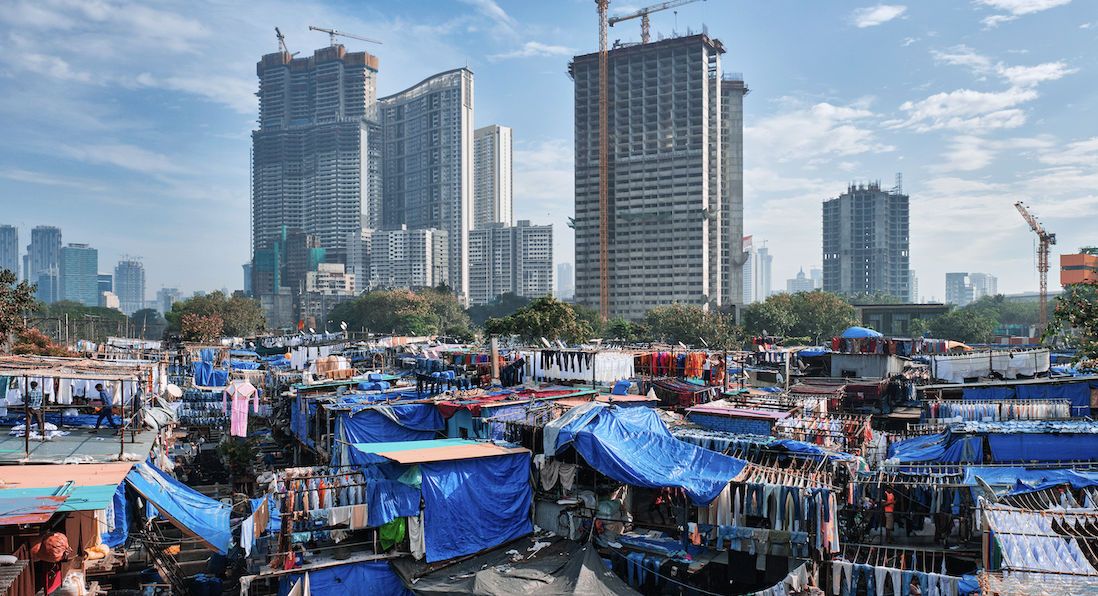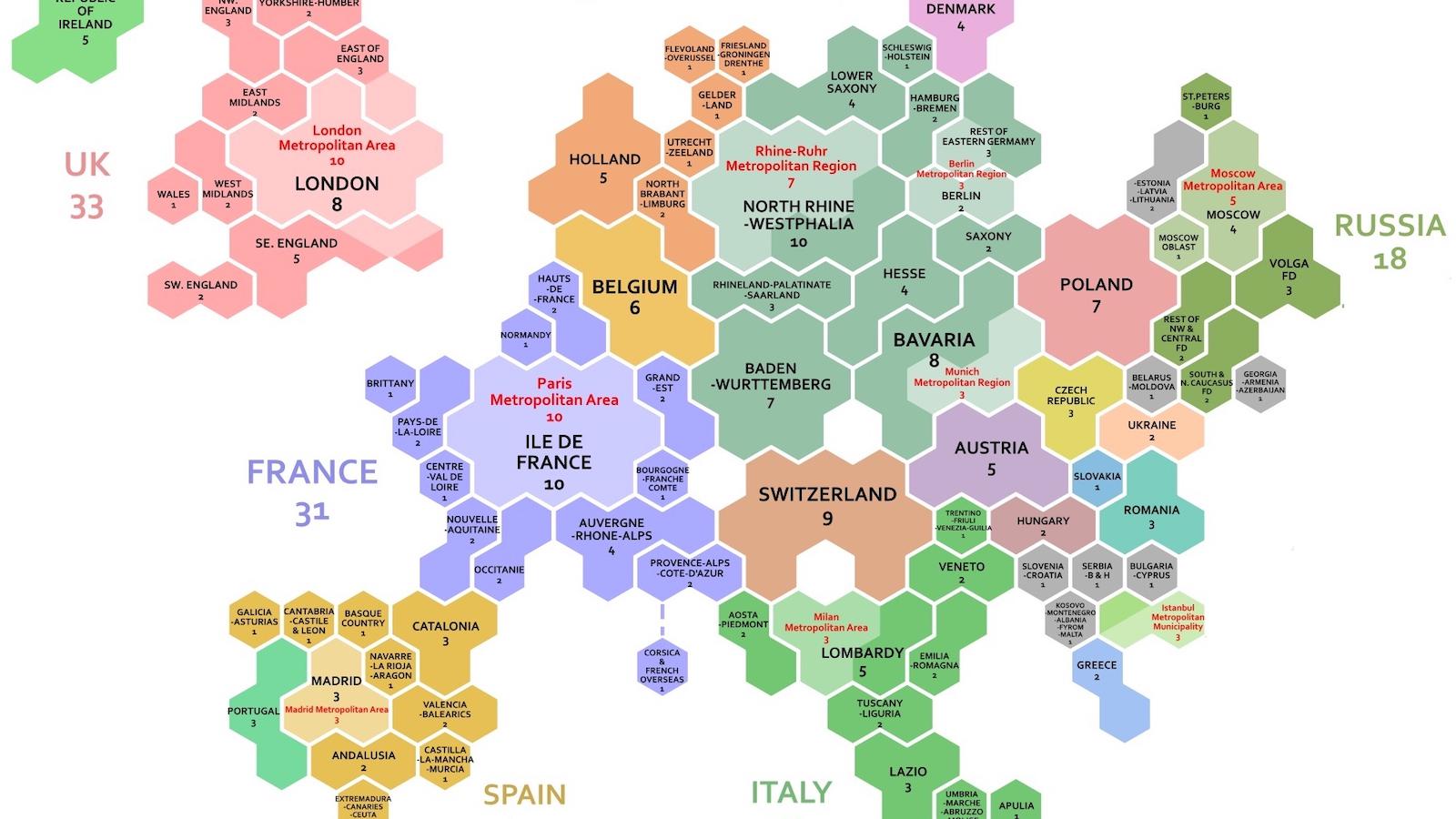9 astonishing ways that living standards have improved around the world

- Most people think the world is bad and getting worse, but scientific data proves otherwise.
- In reality, the world has never been richer and healthier than it is now. And it continues to get better.
- Nine particular improvements in living standards are driving this trend.
“On what principle is it, that when we see nothing but improvement behind us, we are to expect nothing but deterioration before us?”
—Thomas Babington Macaulay, Review of Southey’s Colloquies on Society, c. 1830
Over the last 200 years, the lives of average people in every country have been radically transformed and improved. In our modern day, we are living longer and are more prosperous than ever before — in both high-income and low-income countries. And while progress forward is by no means progress completed nor a guarantee of progress to come, the remarkable improvements in global living standards serve, not as a high water or finish line, but rather as a source of inspiration and hope.
Here are nine astonishing ways in which life has improved for the average person around the world.
#1. Life expectancy
Whether you live in the United States, life expectancy at birth 79 years, the United Kingdom (81 years), Egypt (72 years), or Bangladesh (73 years), there has never been a better or more likely time to live into old age. Travel back just 200 years to the United Kingdom in 1822, and the people around you would have a life expectancy at birth of no more than 40 years, while India and Bangladesh could expect an average life of just 25 years. Between 1800 and 2021, life expectancy in most of today’s best-performing countries, such as Norway (83 years) and Japan and Singapore (85 years each), improved by 159%, 136%, and 193%, respectively, according to data gathered by Gapminder.
But these examples are not statistical outliers. Over the same period, countries across the economic spectrum, from low-income to high-income, experienced a dramatic improvement in life expectancy. As the Industrial Revolution gathered momentum, circa 1800, virtually all countries had a life expectancy at or below 40 years; today, just six countries have a life expectancy below 60 years. Put another way, a daughter born into a family in Lesotho or the Central African Republic — the countries with the lowest life expectancy today, each at around 53 years — can expect to live a longer and healthier life than the newborn daughter of an Englishman or American in the year 1800.
Global improvements in life expectancy have not been limited to the early industrial past. Much progress has been made, particularly in developing countries in the greater Asia region, in just the last 30 years. Between 1991 and 2020, China, India, Pakistan, and Afghanistan gained life expectancy improvements from 5 years (Pakistan, from 61 to 66) to 11 years (India, from 60 to 71).
#2. Extreme poverty
Extreme poverty, that is, living on just $1.90 per day or less, is an almost unimaginable degree of hardship and suffering. However, it also has been the default starting point for all countries. For nearly all of human history, this was everyone’s fate, spare but a few elites. Those who lived through pre-industrial civilization lived in a world where nearly 90% of the world’s population lived in extreme poverty, almost always one poor harvest, moderate injury, or illness away from immediate hunger and lack of shelter.
To quote Johan Norberg from Progress: Ten Reasons to Look Forward to the Future:
“It is easy to forget the dreadful circumstances of our ancestors’ lives even in the richest countries. The accepted definition of poverty in a country like France was very simple: if you could afford to buy bread to survive another day, you were not poor.”
Such was the ubiquity of want that few living during the Industrial Revolution could hope to escape the crushing intergenerational poverty. By 1800, China and India had inflation-adjusted GDP per capita figures of just $1,080 and $1,200, respectively, while the West was little better off, with the U.S. and the UK generating an inflation-adjusted GDP per capita of $2,960 and $3,890 respectively. To put that into perspective, the United Kingdom, a global powerhouse at the time, had a smaller GDP per capita than Zimbabwe, the Republic of the Congo, Yemen, and Turkmenistan 200 years later at the turn of the millennium.
Global extreme poverty began to decline in the early years of the 17th century but gathered the greatest pace from 1950 onward, as globalization began to accelerate the trade and exchange of knowledge, technology, resources, and services. The greatest reduction in extreme poverty began in 1990, with a precipitous 15-year decline that saw approximately 1.1 billion people climb out of extreme poverty. That is roughly 75 million, annually, or 6.25 million a month, every month, for 15 consecutive years. In the seven decades since 1950, global extreme poverty has declined from 63% to roughly 9.5% in 2015.
#3. Indoor air pollution
High levels of indoor air pollution have reduced the quality of life for generations of people forced to utilize solid biofuels for heating and cooking — historically nearly everyone — but today largely relegated to developing countries. The combustion of poor quality and inefficient solid fuels in and around living areas blackens walls and lungs alike, with a disproportionate health impact on those over 50 and under 5 years of age. Global illness attributed to indoor air pollution accounts for 4% of all deaths, about 2.3 million globally in 2019. The problem is particularly acute in low-income countries, such as those in Sub-Saharan Africa, which accounted for 9% of deaths (about 656,000).
However, since 1990, civilization has made outstanding progress in reducing the burden of indoor air pollution. In the nearly three decades between 1990 and 2019, premature deaths attributed to household air pollution fell by over 2 million across all countries. The vast majority of the progress in improving indoor air quality has been driven by global economic growth, as well as the increase in incomes for the people living in low-income countries. As incomes in low-income countries increase, many families are able to gradually make the switch from the most polluting and dangerous heating and cooking fuels (wood, charcoal, and coal) to incrementally cleaner fuels, like kerosene and ethanol. From 2000 to 2020, the share of the population with access to clean fuels for cooking climbed steadily from 49.5% to 69%. Indoor air gets even cleaner as people get access to electricity.
#4. Food and famine
We are living in the best-fed time in human history. Never before has the average human had such abundant access to a high-quality, nutritious, and dependable food supply. The history of humanity through the lens of food is a history of hunger and famine. It’s a history of subsistence, permanently on the edge of starvation. Life in Medieval Europe was nasty, as described in At Home: A Short History of Private Life by Bill Bryson:
“Famine was common. The medieval world was a world without reserves and when harvests were poor, as they were about one year in four on average, hunger was immediate. When crops failed altogether, starvation inevitably followed.”
But between the start of the Industrial Revolution and current times, four great forces began to transform our food system: (1) the Bosch-Haber process for the production of synthetic fertilizers; (2) high-yielding crop varieties pioneered by Norman Borlaug; (3) increased globalization and trade; and (4) mass agricultural industrialization and mechanization.
In the decades between the 1860s and 1940s, global famines claimed, on average, about 57 lives per 100,000; from the 1950s to 2016, it was just 14.4 lives per 100,000, a reduction of about 75%. The forces that restrained famine simultaneously increased access to food, with daily per capita kilocalorie supply increasing globally by approximately 30%. In India, supply went up from 2,020 daily kilocalories to 2,549; in China, per capita kilocalorie supply grew from 1,427 to 3,375 daily. Even that most valuable foodstuff, protein, increased in consumption per capita globally by more than 30% between 1961 and 2019, helping reduce protein deficiency in developing countries.

#5. Vaccination
Few innovations have saved more than a billion lives, but vaccinations definitely have (along with clean water, better sanitation, and synthetic fertilizers). The smallpox vaccine alone is thought to have saved approximately 5 million lives annually, or between 150 million to 200 million lives in total, between 1980 and 2018. Together, the 15 most common vaccinations, from diphtheria and measles to pertussis and rubella, have helped save the lives of billions, with children under the age of 5 being the biggest beneficiaries. As a result, child mortality rates plummeted.
#6. Literacy
From books to blogs, humanity is figuratively awash in knowledge. In 2010, Google software engineer Leonid Taycher estimated that nearly 130 million books had been written. This figure obviously excludes countless websites, and equally countless papers, journals, and other valuable expressions of written text. The ability to read and write has been instrumental in growing prosperity, but until relatively recently, most people were illiterate.
In England in the late 15th century, just 5% of the population was literate. Additionally, a 200-page manuscript from the 14th century would have cost the equivalent of two months’ wages for the average worker. It wasn’t until the 16th century that printed books pushed the price down to a full day’s wage, then a quarter day’s wage by roughly 1600. The cost of printed text and the scarcity of mass public education contributed to keeping literacy rates low for a long time.
By 1820, it is estimated that the literacy rate in England was just 53%, desperately low compared with today’s literacy rate of 99%. The story is much the same across the world — that is, a long period of extremely low literacy, with gradual improvements between the 1800s and the early 1920s, followed by a steep improvement from the 1930s onward. While the over-15-year-old literate population of the world stood at just 12% in the year 1800, it had climbed to 87% by 2020.
Today we live in the most educated and literate time in human history, with the vast majority of the world literate. However, there is still progress to be made in places with low literacy rates, such as Afghanistan (37%), Mali (31%), and Niger (35%). In Somalia, the World Bank estimates a literacy rate of merely 5%.
#7. Safe water and sanitation
Historically, a lack of safe water and sanitation has led to massive illness and death. We take tap water and toilets for granted, but these innovations saved the lives of billions of people from infectious disease. In the 18th century, almost no one had access to safe water and sanitation.
There is a long way to go. Globally, unsafe water sources and poor sanitation accounted for 1.2 million and 756,000 deaths, respectively, in 2019. In low-income countries, unsafe water sources account for 4.6% of all deaths, while unsafe sanitation accounts for 3.4%. Progress is occurring slowly but surely. Globally, the share of the population with access to safely managed water grew from 62% in 2000 to 74% in 2021, and access to sanitation improved from 29% in 2000 to 54% in 2020.
#8. Child mortality
Vulnerable to injury and disproportionately at risk of death from infectious disease and malnutrition, it has taken civilization a long time to figure out how best to keep most children alive. The progress made in reducing child mortality — that is, the share of children who die before their fifth birthday — is unprecedented but little celebrated. During pre-industrial and early industrial history, parents endured global child mortality rates of some 40%, with little distinction between region and class. Families welcomed their babies into the world with both joy and trepidation, with the knowledge that many may not survive to adulthood.
From roughly 1860 to 1920, child mortality fell from more than 40% to roughly 30% globally, after which it began a steady and largely uninterrupted decline. By 1986, the rate was just 9.86%. This decline was not exclusive to high-income countries; it was nearly universal, albeit at different rates from country to country. Between 1950 and 1986, the child mortality rate in Africa and Asia fell from 32% and 25% to 18% and 10%, respectively. By 2019, it fell again to 7% and 2.8%, respectively, while the average global rate in 2021 fell to 3.7%.
#9. Economic growth
In the years between 1820 and 2018, global inflation-adjusted GDP per capita grew at an unprecedented rate, from $1,102 to more than $15,000. That incredible increase in global productivity and prosperity fundamentally changed our planet. Economic growth is the engine of progress and the primary driver of innovation, which improves living standards and boosts overall human flourishing.
Never before has the average person lived a longer life or with higher living standards. Whereas in 1800, just one country, Finland, had a life expectancy of over 40 years and the vast majority of countries had an inflation-adjusted GDP per capita of $500 to $2,000, today, no country anywhere has a life expectancy at birth of under 52 years, and the majority of the global population lives in countries with a GDP per capita of $4,000 to $63,000. Gapminder presents what is perhaps the single most important graph in human history: Increasing wealth leads to increasing life expectancy.





